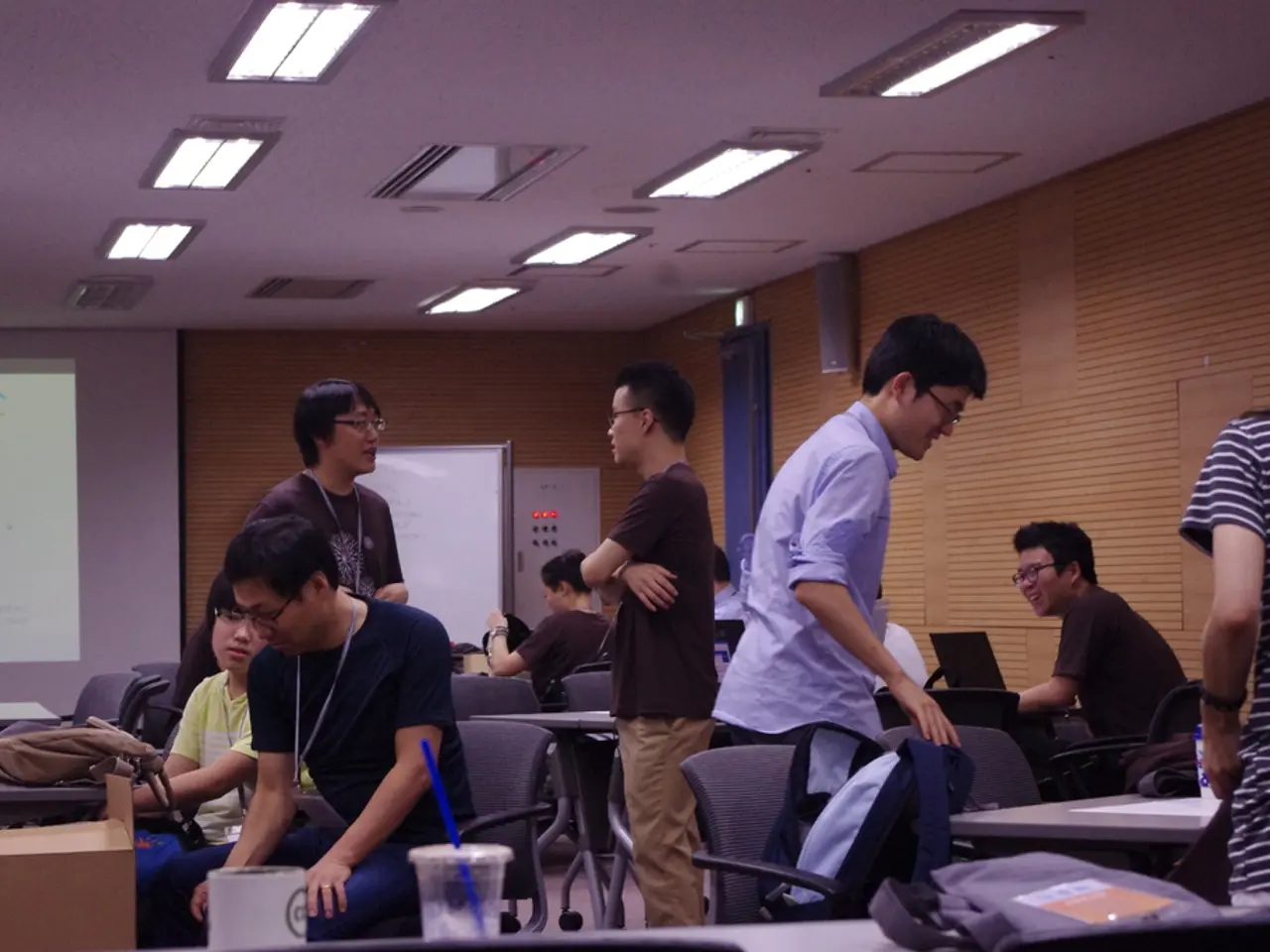Reorganizing Educational Spaces for Student-Led Learning Experiences
The education landscape is evolving, with a growing emphasis on student-centered classroom layouts. These innovative designs prioritise flexible, personalised, and technology-integrated environments, aiming to boost student engagement and collaborative learning.
Flexible Seating Arrangements
A key trend in these student-centered classrooms is the adoption of flexible seating arrangements. Layouts such as horseshoe, circle, clusters, or alternative seating options (e.g., cushions, standing desks) encourage peer interaction and active participation. By moving away from rigid rows, these arrangements facilitate face-to-face discussions and group work, fostering collaboration and engagement.
Student Input in Design Using AI
Schools are increasingly involving students in the design process of their learning environments via AI tools. For instance, elementary students used AI-driven image generation to express preferences for “nooks” or “cozy,” “calming” spaces, demonstrating that personalised, comforting, and intimate areas can enhance students’ sense of ownership and well-being.
Incorporation of Technology and Gamification
Integration of Virtual Reality (VR), Augmented Reality (AR), and gamified digital tools helps personalise learning and keep students motivated by making abstract or difficult concepts more tangible and engaging.
Structured Collaborative Learning Spaces
Educators design classrooms with clearly defined roles and structured cooperative learning activities, promoting equal participation and accountability. Such designs support social-emotional development, foster a sense of belonging, and enhance critical thinking through purposeful collaboration.
Impact on Student Engagement and Collaborative Learning
Spaces designed with student input lead to greater ownership, making students more invested and motivated in their learning environment. Flexible and personalised layouts encourage peer-to-peer interaction, deepening student engagement and fostering a stronger collaborative learning culture. Structured cooperative tasks and clear roles help ensure equitable participation, encouraging all students to contribute and process information actively, which improves learning outcomes and critical thinking.
Learning environments that align physically and pedagogically with students’ interests and social-emotional needs promote engagement by making learning personally meaningful and supportive.
The Future of Education
Adopting student-centered classroom layouts positions institutions to meet future educational challenges, preparing students for the demands of the modern world. The focus on personalised learning environments is gaining traction, with classrooms evolving to cater to individual students' learning preferences and pacing.
Embracing student-centered classroom layouts represents a significant shift toward enhancing the educational experience, prioritising the needs and preferences of students, and fostering environments conducive to engagement, collaboration, and critical thinking. Flexible and adaptable spaces are essential in student-centered design, accommodating various teaching methods and fostering a more inclusive learning environment.
Collaboration is a core aspect of student-centered designs, featuring communal workstations, breakout areas, and technology hubs for peer-to-peer learning. Student-centered classroom layouts promote active participation and engagement among learners, enhancing social interaction, flexibility, and motivation.
Factors to consider include the mobility of furniture, the arrangement of learning stations, and the overall atmosphere of the classroom. Evaluating current classroom layouts is the first step for effective modification toward student-centered classroom layouts. Incorporating technology is vital in modern education, positioning tech resources within reach of all students, providing charging stations, and ensuring reliable internet access.
Student-centered designs include areas for both individual and group activities, accommodating various learning tasks. Student-centered classroom layouts prioritise the needs and preferences of students, fostering engagement and collaboration. Collaborative learning spaces promote interaction among students, fostering teamwork and collective problem-solving.
Emerging trends in student-centered classroom layouts reflect a growing emphasis on creating engaging and flexible learning environments, such as incorporating movable furniture, biophilic design elements, and smart technology. Student-centered classroom layouts can be categorised into collaborative learning spaces, flexible environments, technology-enhanced classrooms, and open-plan classrooms.
Feedback from students and educators can provide valuable insight into the current layout's impact on learning experiences. Flexibility and adaptability in student-centered classroom layouts enable educators to modify the classroom space to accommodate diverse learning styles and preferences.
Key findings from educational research include increased collaboration, improved academic performance, and enhanced motivation. Consider furniture rearrangement to facilitate collaborative learning, using movable tables and chairs to encourage group work and discussions.
Implementing student-centered designs in existing classrooms requires a systematic approach, focusing on space utilisation, stakeholder engagement, and creating zones for diverse learning activities. Research has demonstrated the effectiveness of student-centered classroom layouts in promoting critical thinking and problem-solving skills.
Assessment of current classroom layouts is crucial for transitioning to student-centered designs, involving analysis of existing arrangements for student engagement and collaboration. Involving students in the redesign process fosters a sense of ownership and adaptability, reinforcing the essence of student-centered classroom layouts. Collaborative learning spaces often feature movable furniture and technology tools to facilitate real-time collaboration.
- Embracing modern education trends, professional development programs focus on incorporating instructional strategies such as e-learning and gamification, to cater to individual students' learning preferences and paces, ultimately boosting learning engagement and personal growth.
- To promote a sense of ownership and well-being, schools leverage AI tools in the design process, allowing students to voice their opinions on aspects like personalized, comforting, and intimate learning spaces, contributing to the creation of education-and-self-development conducive environments.
- With the adoption of technology-integrated, student-centered classrooms, educators engage students in structured collaborative learning spaces. These designs promote equal participation and accountability, fostering a stronger collaborative learning culture and enhancing critical thinking through purposeful collaboration, thereby improving learning outcomes.




